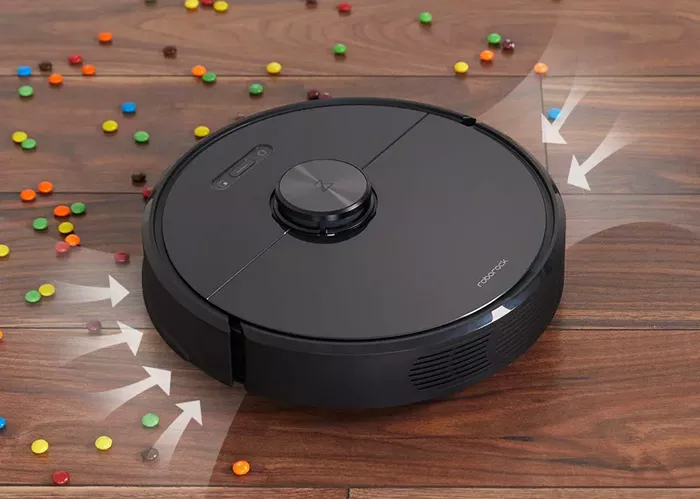The term “sweeper” is commonly used in the cleaning industry to describe various devices designed to clean surfaces efficiently. Sweepers come in different forms and functionalities, catering to diverse cleaning needs from residential to industrial applications. This article will provide a comprehensive overview of what a sweeper is, its types, how it works, and its benefits.
Introduction to Sweepers
Sweepers are specialized cleaning tools designed to remove dirt, debris, and dust from various surfaces. They are used in both indoor and outdoor settings, ranging from homes and offices to commercial spaces and industrial environments. Sweepers streamline the cleaning process by utilizing mechanical or motorized systems to enhance efficiency compared to traditional cleaning methods.
Definition of a Sweeper
A sweeper is a cleaning device equipped with brushes or rollers that collect debris from the floor or other surfaces. The collected debris is then transferred to a dustbin or hopper, making it easy to dispose of. Sweepers can be manual or powered, with powered models often incorporating additional features like suction for improved cleaning performance.
Types of Sweepers
Sweepers come in several types, each designed for specific cleaning tasks and environments. Understanding the various types can help you select the right sweeper for your needs.
Manual Sweepers
Manual sweepers are operated by hand and rely on the user’s effort to push or maneuver the device across the floor. These sweepers are typically lightweight and do not require electricity, making them a cost-effective choice for certain cleaning tasks.
Push Sweepers
Push sweepers are designed for indoor use. They feature rotating brushes that sweep debris into a central collection bin. These sweepers are ideal for hard floors and low-pile carpets. They are easy to use and require minimal maintenance.
Battery-Powered Sweepers
Battery-powered sweepers combine manual operation with powered brushes. They are suitable for larger areas than push sweepers and offer cordless convenience. These sweepers use rechargeable batteries and are effective for both indoor and outdoor cleaning.
Powered Sweepers
Powered sweepers use electricity or fuel to operate, making them suitable for larger areas and more demanding cleaning tasks. They often feature advanced cleaning mechanisms, including suction and motorized brushes.
Electric Sweepers
Electric sweepers are versatile and can be used for both indoor and outdoor cleaning. They come with features like adjustable brush heights and variable speed settings. Electric sweepers are ideal for commercial spaces, warehouses, and outdoor areas, offering efficient and thorough cleaning.
Gas-Powered Sweepers
Gas-powered sweepers are used primarily for outdoor cleaning tasks. They are equipped with gasoline engines that provide robust power for heavy-duty cleaning. These sweepers are suitable for large parking lots, streets, and expansive areas. They can handle tougher debris than electric sweepers.
How Sweepers Work
Understanding the operation of a sweeper can provide insights into its effectiveness and efficiency. Sweepers typically involve a combination of brushes and collection systems to clean surfaces thoroughly.
Brush Mechanism
Most sweepers feature rotating brushes that agitate the floor surface to lift dirt and debris. The design of these brushes may vary, with cylindrical or disc-shaped brushes commonly used. The rotating action helps to sweep debris towards the center of the sweeper where it is collected.
Suction System
Many powered sweepers include a suction system to enhance debris collection. The suction mechanism works alongside the brushes to pull dirt and dust into a dustbin or vacuum chamber. This additional feature helps to capture fine particles that might be missed by the brushes alone.
Collection Bin
The collected debris is deposited into a dustbin or hopper located on the sweeper. The size of the collection bin can vary, with larger bins designed for extensive cleaning tasks. Most sweepers feature easy-to-empty bins, simplifying the maintenance process.
Benefits of Using a Sweeper
Sweepers offer several advantages over traditional cleaning methods, making them a popular choice for both residential and commercial environments.
Efficiency
Sweepers are designed to clean large areas quickly and efficiently. The mechanized components, such as rotating brushes and suction systems, allow for faster debris collection compared to manual sweeping. This efficiency is especially beneficial for high-traffic areas and commercial spaces.
Versatility
Sweepers can be used on various surfaces, including hard floors, carpets, and outdoor areas. They are adaptable to different types of debris, from fine dust to larger particles. This versatility makes them suitable for a wide range of cleaning tasks.
Ease of Use
Many sweepers are designed with user-friendly features, such as adjustable handles and easy-to-empty dustbins. Battery-powered and electric models offer added convenience with their automatic operation, reducing the physical effort required for cleaning.
Reduced Physical Strain
Sweepers help to reduce physical strain associated with manual sweeping. The powered brushes and suction systems do much of the work, allowing users to clean more effectively with less effort. This benefit is particularly valuable for individuals with physical limitations or for tasks requiring extended cleaning sessions.
Choosing the Right Sweeper
When selecting a sweeper, consider factors such as the size of the area to be cleaned, the type of surface, and the level of debris. Manual sweepers are suitable for smaller areas and light cleaning tasks, while powered sweepers are better for larger spaces and heavy-duty cleaning. Additionally, consider the maintenance requirements and features that will enhance your cleaning experience.
see also: Do You Know the Function of a Manual Sweeper?
Conclusion
A sweeper is a valuable cleaning tool designed to streamline the process of removing dirt and debris from various surfaces. By understanding the different types of sweepers, their mechanisms, and their benefits, you can make an informed decision about which sweeper best meets your cleaning needs. Whether you require a manual sweeper for quick cleanups or a powered sweeper for extensive cleaning tasks, selecting the right model will ensure an efficient and effective cleaning solution.

